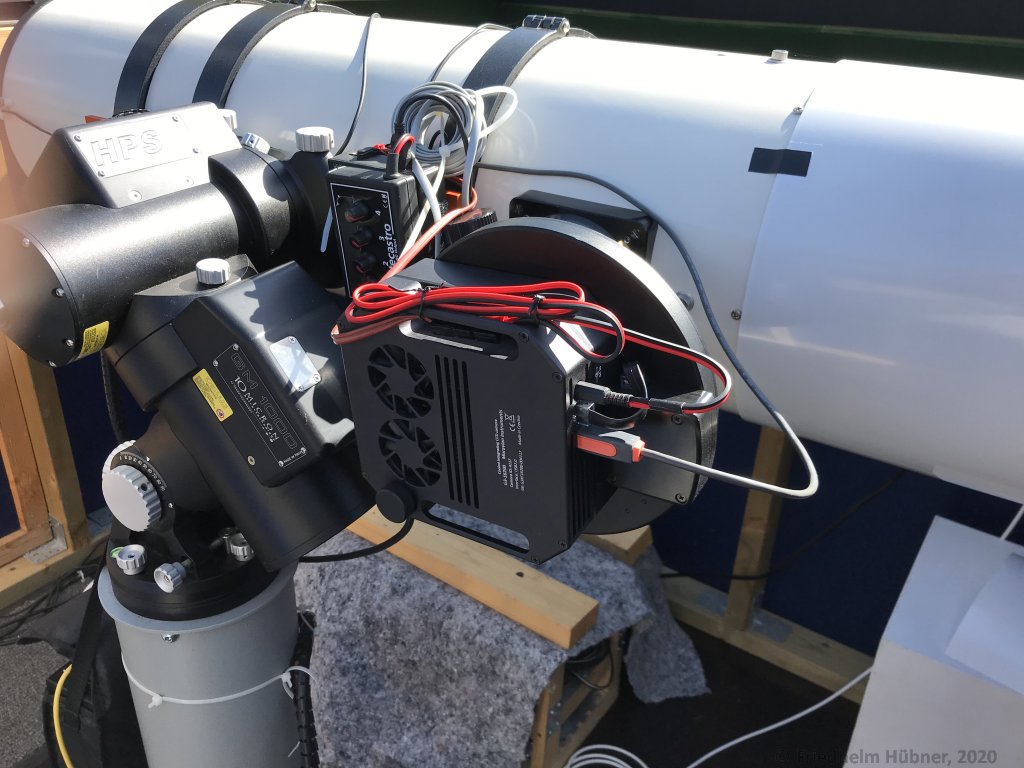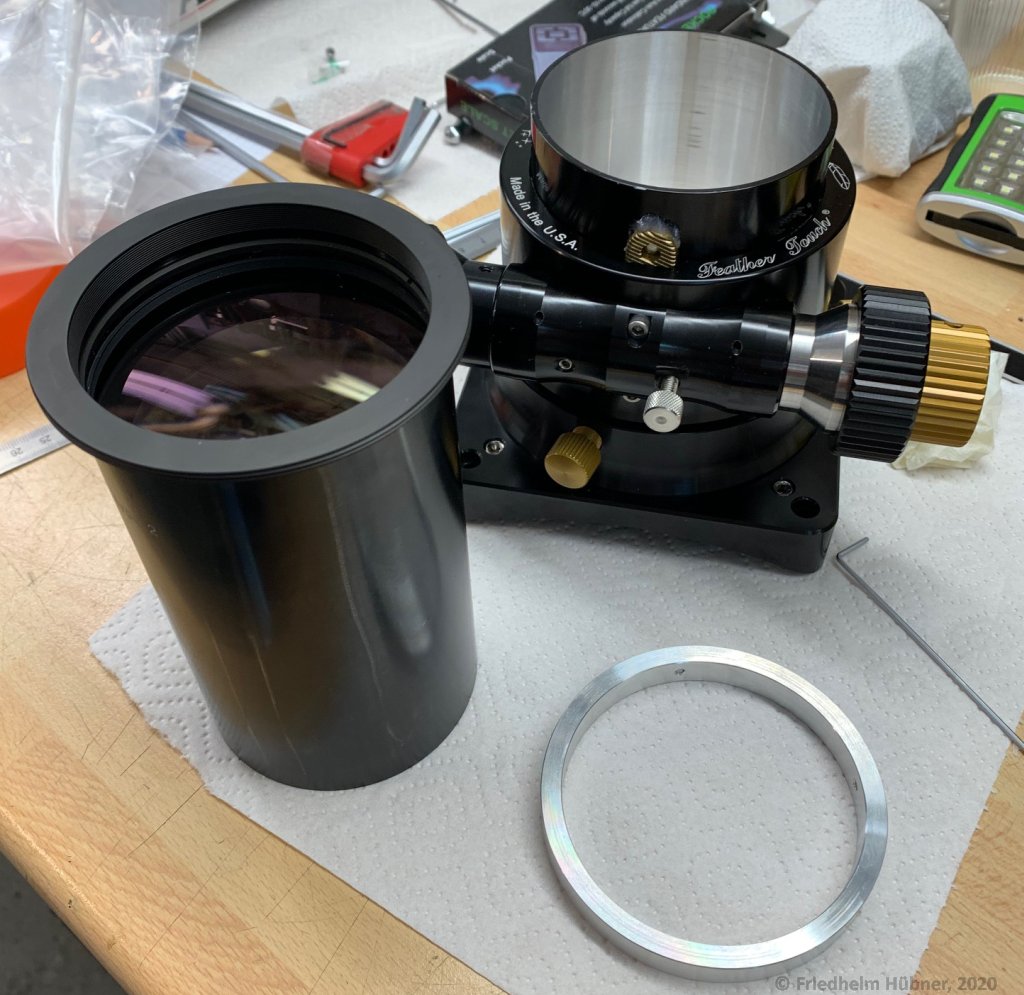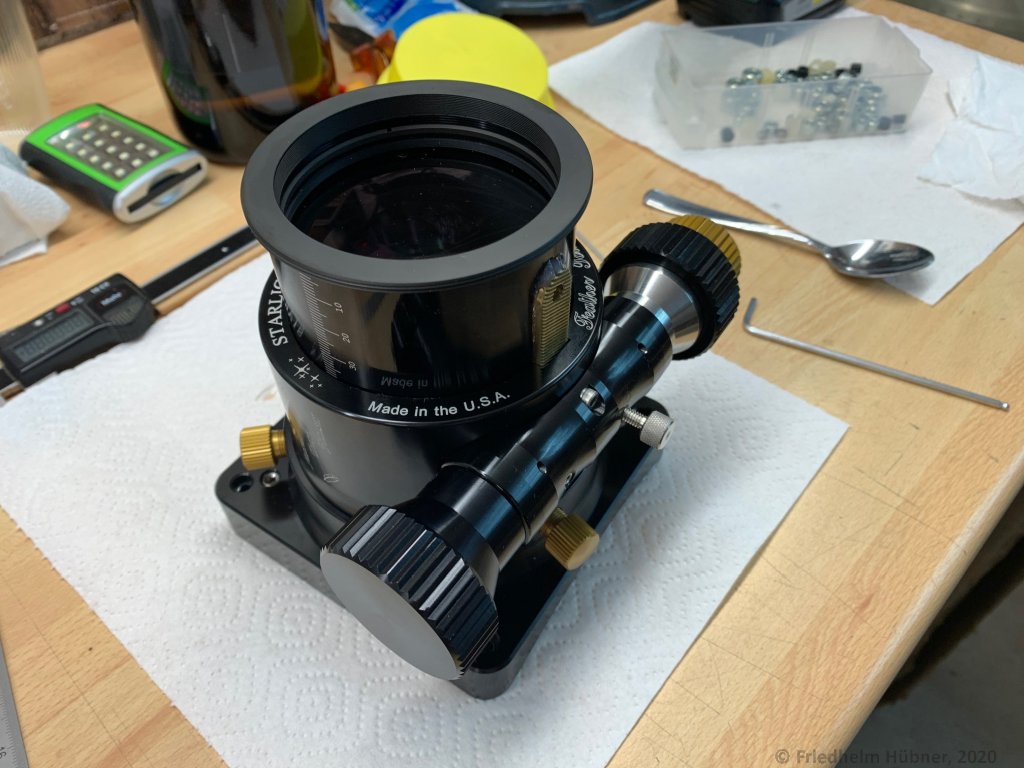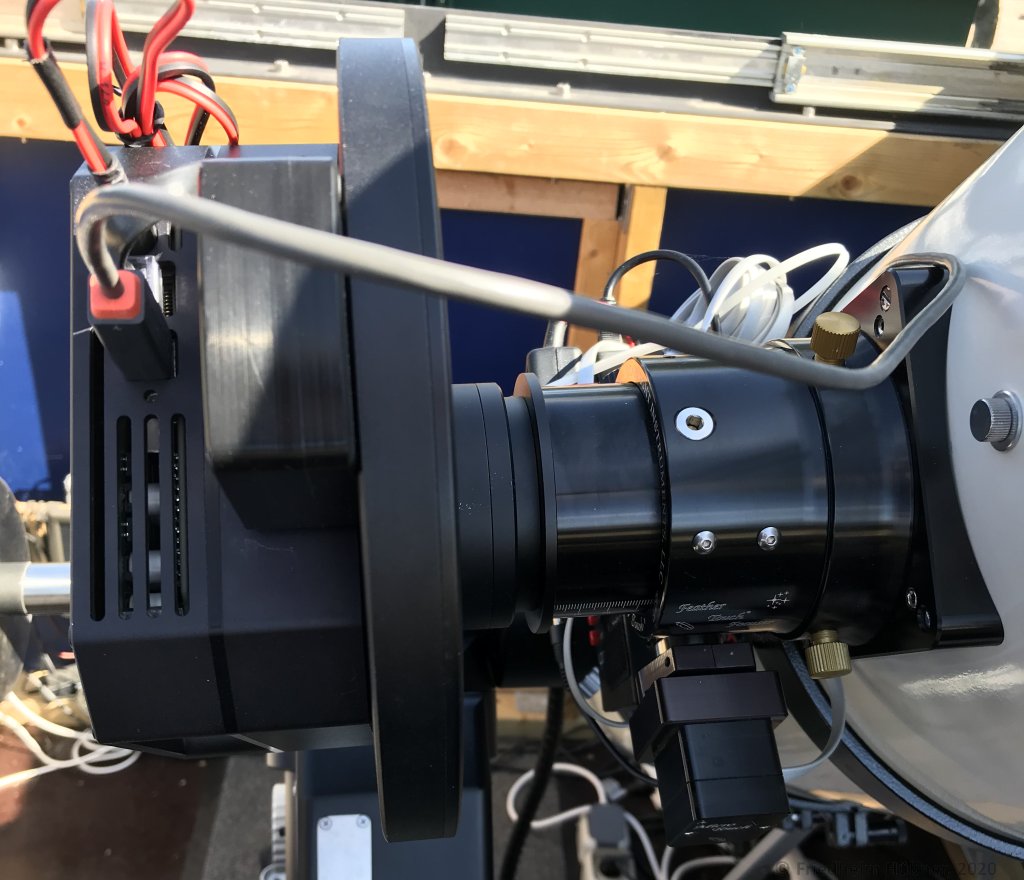|
10"er with Moravian

| Date/Site: |
17. July 2020, Presberg |
Originally I bought a used Moravian G3-16200 including Astronomik-filters in mint condition on the Astronomie.de-market to use it on the 40cm-Newton in the new remote station of my local club. A massive camera and a fat telescope should be a good match, I thought.
To achieve good illumination and correction of the APS-H-chip a 2,5"-Wynne-comacorrector, like the one sold by Teleskop-Service, should match perfectly (including the 3"-Feathertouch focuser).
But no luck, the corrector was defect and had to be returned after extensive tests. To avoid further frustration I bought the 3"-version of the Televue Paracorr. Ingo integrated the Big Paracorr with the 3" Feathertouch focuser.
3"-Paracorr, 3"-Feathertouch with turned inside diameter of the drawtube, clamping collar to keep the Paracorr in the drawtube

Paracorr mated to the Feathertouch

The clamping collar on the corrector

Then we encountered difficulties adapting it to the White Elephant and decided to buy a new CMOS-camera that would work without major modifications.
I decided to adapt the 3"-Paracorr/FT/Moravian to my 10"-Newton.
The secondary and the opening for the focuser were shifted to place the Paracorr exactly at the right focus distance of the mirror. After numerous and meticulous calulations, anxious drilling and exact adjustments the first image showed success: focus is reached, mechanics is stable and it looks good.
Camera, focuser and corrector on the 10"-Newton

Besides exhibiting the expected improvements (larger field of view, better correction, lower vignetting, antiblooming gate, smaller pixels) every new system also presents new unexpected challenges. Here the "first light"-frames showed bright wave-like gradients across the whole field of view, almost swamping the signal.
Joel Short gave the right hint in the SGP-forum: It was the RBI-flash, flooding the chip with near-infrared light prior to every image. This is used to reduce "Residual Bulk Images", the trapping of photons from brighter stars in the chip's substrate. By default this flash is activated in the camera-driver, even as RBI does not hamper the 16200 much. You make this error only once.
Although I new better the comparatively lower quantum efficiency came as a surprise. The stacks seemed to have less "punch" than those from the QSI-3200. But the frames are much cleaner, more uniformly illuminated and they lack the annoying blooming-streaks which ruined many frames of the 3200-based cameras.
To sum it up: The substitution led to a distinct advancement of the whole system and the individual frames need more exposure time.
|